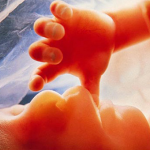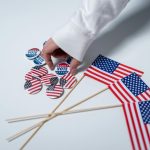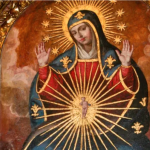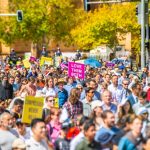Dr. Wanda Skowronska
Many use the term ‘post-pandemic’ of our times, full of hope that the worst events of the past two years are fading. Though some of these excesses have faded into the past – queues in supermarkets, lockdowns, closure of churches and police aggression against protestors – there remains, however, a residual fear, a real existential fear, which can be triggered at any moment. Some are questioning what really happened, as if it were a bad dream from which they have awakened.
Remember the Belgian psychologist, Mattias Desmet, Professor in Clinical Psychology at Ghent University who noted the widespread fear generated by the Covid pandemic through the phenomenon of ‘mass formation?’[i] His analysis shot him to fame as people like Dr Robert Malone and virologist Geert Van den Bosche realised he had plumbed the ‘why’ of the sudden single global narrative. ‘Mass formation’ exists, he said, and is a phenomenon that affects groups, societies, and even countries. It explains much of twentieth century ideological behaviours, where entire nations and groups of nations have bought into a single narrative at the same time– Nazism and Communism being prime examples. For ‘mass formation’ to happen Desmet said there have to be some preconditions. These include; widespread social alienation/depression, the loss of shared cultural, religious sense, free-floating anxiety and frustration, ever present, with nowhere to direct it.[[ii] These were well in place globally in the past decade, particularly in the west. And the process of single narrative ‘mass formation’ that occurred during the Covid years has not gone away.
The underlying fear became very evident in the lack of questioning of the testing behind the vaccinations which were foisted on all so quickly. Not to mention the resistance to alternative evidence-based treatments – treatments such as Ivermectin, the anti-parasitic, anti-viral drug, whose initial developers, William C. Campbell, and Satoshi Ōmura, won the Nobel Prize in 2015. Ivermectin is one of the safest drugs on the face of the earth and its efficacy with Covid was found in 2020 by doctors who were desperate to find some treatment in the absence of early treatment protocols. It was used in India’s Uttar Pradesh, with a population of 240 million people, and virtually eliminated Covid, but was unaccountably sidelined or deleted from consideration. No-one with a scientific mind objects to questioning the efficacy of alternate drugs – some are good, some are not. After all, scientists question the evident facts – that is their job. But to shut down discussion is another thing altogether. Desmet noted the fear among medical professionals and researchers, of even discussing the science behind these vaccines.
Now there are increasing numbers of health leaders and researchers who say that the vaccinations did not work in stopping the spread of the virus, nor were adequate tests done beforehand on their mid and long-term effects. Several countries are recommending a 5th vaccination in little over a year.[iii] What is going on? There are strange anomalies which are repeatedly surfacing: There is the strange fact that countries like Bulgaria which had the lowest European vaccination rate, also had one of the lowest European Covid infection rates, while Spain and Portugal with very high vaccination rates had high Covid infection rates.[iv] There is also the unusual increase in sudden deaths among young people, particularly athletes. Examples include the young bicyclist Rab Wardell who died recently after he won a race, aged 37; Rugby player Ben Benn who died aged 30 after a football match; young football player Mollie White who died suddenly; and Dominic Oscar a boxer who died at 19 – as well as other reports of young, otherwise healthy people dying. Canadian journalist Mark Steyn states, ‘nothing to see here’ while giving more details of similar cases.[v] He notes that after the vaccinations were introduced, the rate of deaths went up each week. And official statistics from Alberta in Canada list ‘cause unknown’ as the chief cause of death. Similarly in Germany, statistical analyses show excess mortality in younger age groups after the vaccinations and booster shots. [vi] Of course, correlation is not causation, nor are all dying, just some, but as Steyn says, actuaries are asking questions about the evidently excess deaths, in the past year, after the vaccinations were introduced.
Then there is the inconvenient truth that the RACGP (Royal Australian College of General Practitioners) candidate, Victorian Dr Julian Fidge, has asked the TGA to overturn its ban on GPs prescribing the anti-parasitic drug to prevent and treat COVID-19’, adding that, ‘doctors who believe it does not work are too “lazy” to check the evidence’. [vii] And what are we to make of Obstetrician/Gynaecologist Luke Mc Lindon’s evident concern over the data from his own practice:an evident rise in miscarriages which the media has tried to silence?[viii]
There are scientists and researchers who over the past two years have refused to accept the single vaccination narrative and have continued to question the testing process, and evidence of adverse effects higher than with any previous vaccine. Those who question these anti-Covid vaxes, and the lack of Phase Three testing (which is supposed to occur with every vaccination), are scientists, virologists, immunologists and Nobel prize-winners – such as Dr Thomas Borody, Dr Seheult, Dr Peter McCullough, Luc Montagnier, Dr Anthony Cardillo, Dr Zelenko, Dr Ryan Cole, Dr Pierre Kory, Dr Tess Lawrie, Dr John Campbell; Dr Robert Malone, Dr Michael Yeadon – among others. They are all accomplished scientists. They are not anti-vaccination – they simply keep asking questions and invite discussion about this vaccination. More than 5,200 doctors and scientists signed the ‘The Physicians Declaration’ which criticises policymakers for their ‘one-size-fits-all’ COVID-19 treatment strategy, even stating that such restrictions result in ‘needless illness and death.’ Why is their scientific thinking sidelined?
Desmet gives an insight here – he says when dissident groups emerge in a time of mass formation – they have virtually no chance of changing the single narrative – as fear drives it, not rational questioning. The questioners arouse the generalised anxiety which existed before the mass formation which the vaccine narrative had assuaged. And Desmet says, that people do not want to be reminded of the anxiety and frustration. At the same time, he says that the continuation of the small dissident groups speaking out serves a very important function and that is why it should continue. Desmet says it disturbs the mass hypnotic state, it stops the state of mass formation going too deeply into societies. It is important to keep chipping away against the mainstream narrative, even if it seems impossible. Once the dissidence stops, he says that history shows us repeatedly, the violence starts.
Desmet had a fascinating online discussion (on July 7, 2022) with an Irish journalist Ivor Cummins who spoke of ‘falling out’ with his friends when he noted recent reports of sudden deaths of healthy people.[ix] Early in 2020 – Ivor, with a technical, scientific background got his friends’ attention with his discussion of Covid coming from China. That was fine – but this all changed when the vaccination rollout plan gained tempo in 2021. Questioning China’s version of the events was one thing – but questioning these individual vaccines became a questioning of all vaccines – and life-threatening, and that was another thing. It was evidently too disturbing in the new established state of fear. Cummins lost many friends, though not all. Desmet explained to Cummins that societies in a state of fear participate in rituals to assuage their fear – such as mask wearing (whose use was questioned by Fauci himself) and repeating mantras like ‘we’re all in this together’ (actually the pandemic drove people further apart). However, Desmet explained to Cummins why he had lost so many friends: ‘you refused to participate in the ultimate ritual … the taking of the vaccine’.[x] Desmet said he too had lost some friends and was ‘excommunicated’ from some groups of academics. But those who really understood what he said now are in touch with him from around the world. He was able to tie together the scientific, statistical and psychological dimensions for those seeking to understand them.
In her book A State of Fear (2021) Laura Dodsworth also raised the ‘what’ and ‘why’ questions – to what end was the role of the unelected “psychocrats” and this pandemic campaign directed? She concluded that by exacerbating the fear around COVID, governments (or those who advise them) have been building compliance muscle-memory in citizens, perhaps to prepare them for future better compliance. Of course, Catholics have a long history of belonging to the city of God, rather than to the city of man, and have an advantage in ‘seeing through’ things that threaten the practice of their faith. But fear can cut across all groups – religious, academic and professional – and often it is a matter of personalities with traits of curiosity and suspicion that can create a wedge in the mass formation.
Fortunately, both pro-vaccination and anti-vaccination groups are increasingly listening to scientific information often given via alternative media outlets – Rumble, Bitchute and Brighteon. Desmet reiterates that as time goes on, the ‘fear driven masses’ lose their energy and that we need to help this process ‘before they destroy the people who do not go along with them’.[xi] We should continually ask – why should scientists who question be ignored? Why is there no discussion of evidence-based alternative treatments in the mass media? Why were effective early treatments banned? Why did the vaccinations not work beyond a few months? While admitting ‘correlation does not mean causation’, why are there sudden unexplained deaths among young healthy athletes, as verified by funeral directors and actuaries? And a whole host of other questions. Each question chips away at the wall of single narrative domination and asserts the human freedom to think.
Endnotes









